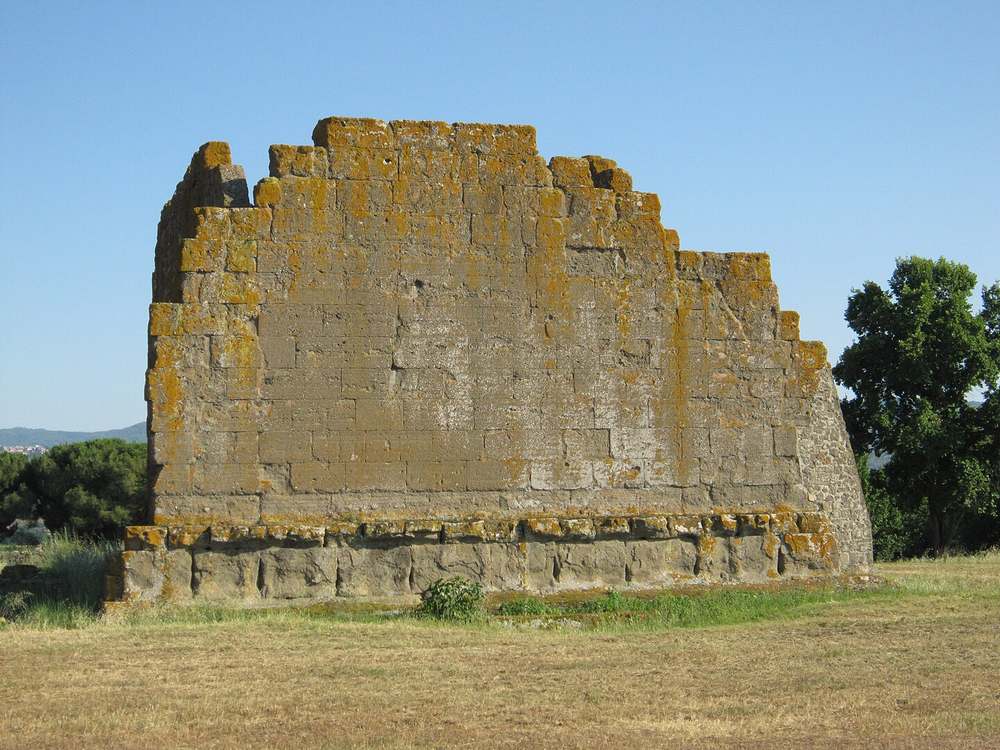Ancient Stone-Lined Basin Discovered At Roman Town Reveals Engineering Brilliance Predating Concrete

A massive, early republican-era water basin was recently uncovered in the ancient Roman town of Gabii, central Italy, that was constructed without concrete.
While architectural students from around the world come to marvel at the Romans’ structures of marble, brick, and self-healing concrete, this basin was made of meticulously stacked stones in harmony with the local topography.
Gabii was inhabited by a pre-Roman Italian tribe that eventually abandoned the site, some 11 miles away from the Eternal City, by 50 BCE, and it’s been under excavation since 2009. Unlike Rome, where the ancient foundations have been overbuilt throughout the last 2,000 years, Gabii remains largely as it was.
Like Pompeii, Gabii yields new discoveries frequently, and most recently it was this stone basin that captured headlines. Partly carved into the bedrock, it was likely made around 250 BCE, but could be as old as 400 BCE. It’s the first example of monumental stonework found at Gabii that isn’t a fortification or temple.
“Basins like this are rare, and this one predates Roman concrete and hydraulic mortar. Its design also shows how ancient engineers used the natural slope of the land—part of the ancient volcanic crater that Gabii was built next to—to its advantage,” says Marcello Mogetta, chair of classics, archaeology, and religion at the University of Missouri, who leads the team excavating the site currently.
The builders’ choices to use such durable materials and work in concert with the slope of the hill below which it was built demonstrate a substantial knowledge of how to engineer structures to last—in this case literally through the ages.
“Excavating the original soil at the bottom will tell us whether it was fed by a spring or the water table and whether it was mainly for practical uses—supplying water to nearby buildings—or had a symbolic or sacred function,” Mogetta told Engineering News Record.
ALSO CHECK OUT: Tiny Italian Town Dug Up an Extremely Rare Roman Temple while Trying to Build Supermarket
Roman roads are famous for their engineering excellence. The Romans built the final layer of the road—the cobbles—like a wall, by stacking stones that fit together naturally. The basin on the surface seems to exhibit similar stone-stacking methods.

The University of Missouri holds a 3-year permit for excavation at the site under the Gabii Project, launched in 2009 by the Univ. of Michigan with the aim of conducting a geophysical survey of the former urban center of Gabii.
Previously, the only above ground evidence of any note were several walls of a temple dedicated to Juno, but following the survey, large-scale unearthing was performed over the twenty-teens that revealed substantial portions of several ancient city blocks.
MORE PRE-ROMAN DISCOVERIES: Archaeologists Find 24 Bronze Statues ‘Without Equal’ Preserved in Tuscany for 2,300 Years That ‘Rewrite History’
In regards to the basin, Mogetta believes that it likely had a ceremonial use, based on finds of pottery and oil lamps discovered very nearby.






Please be good and do not spam. Thank you.